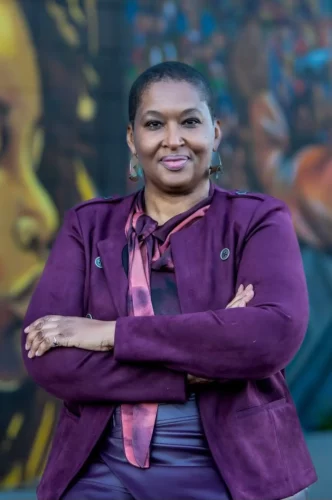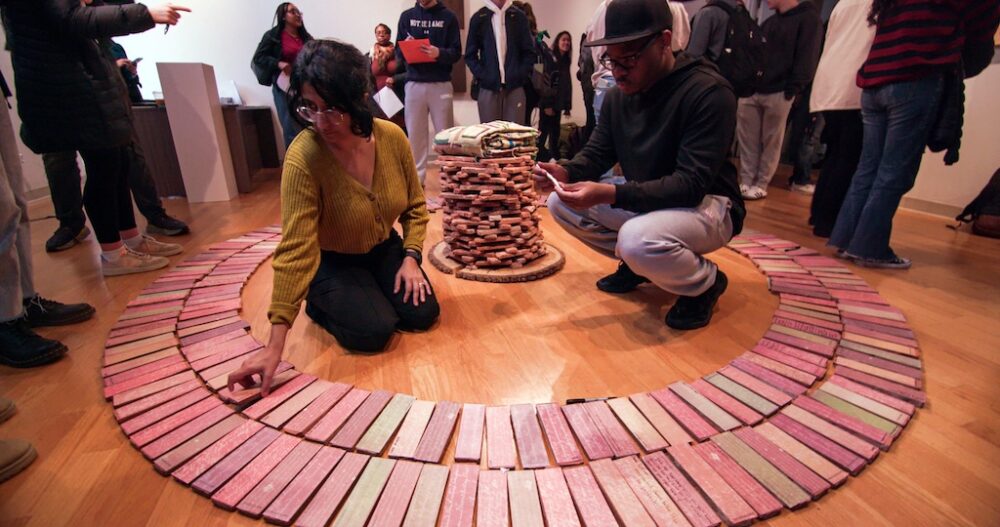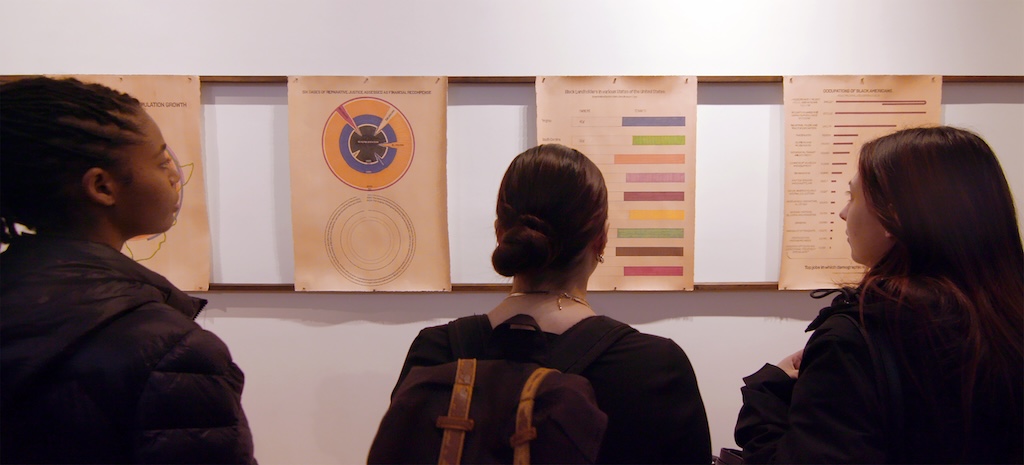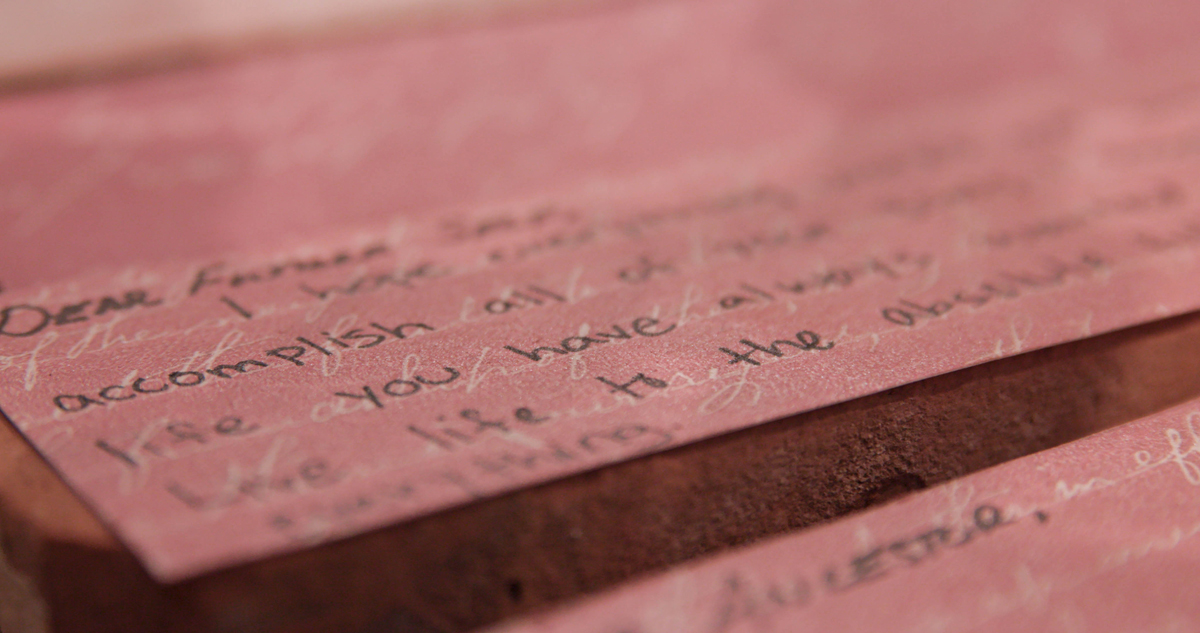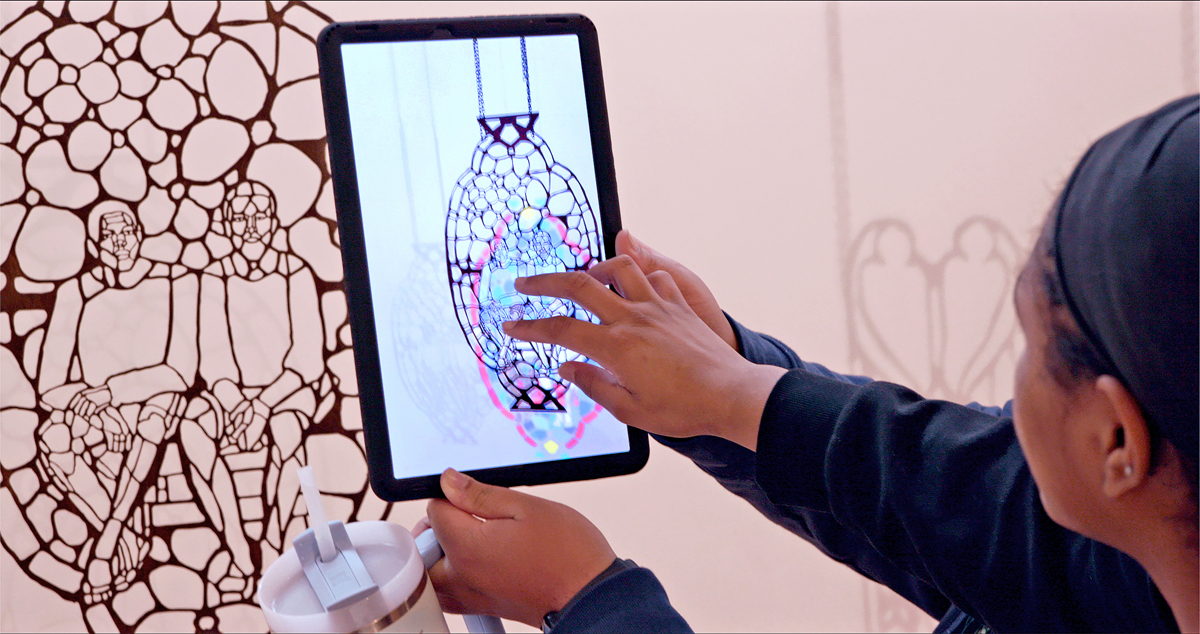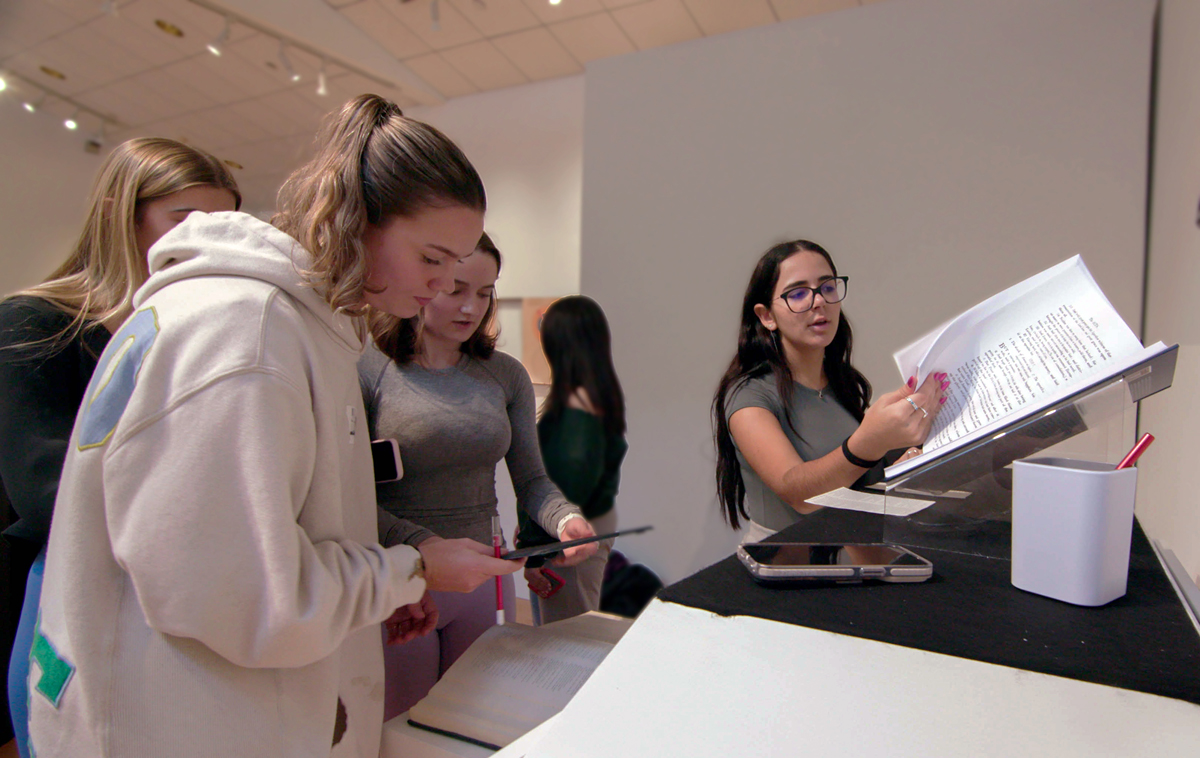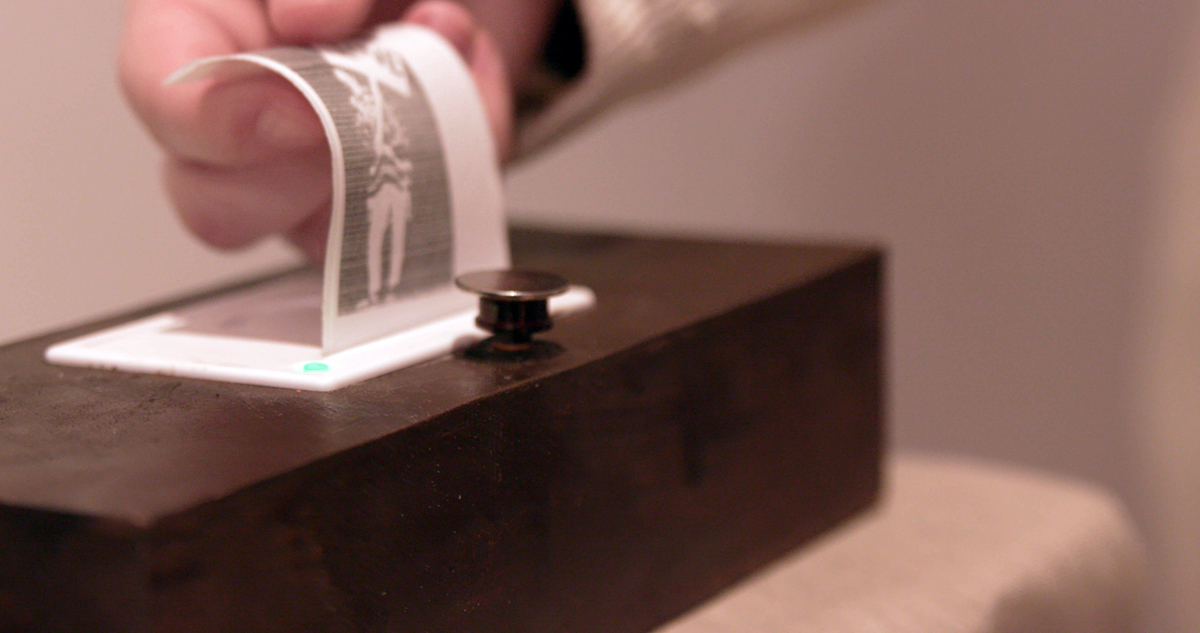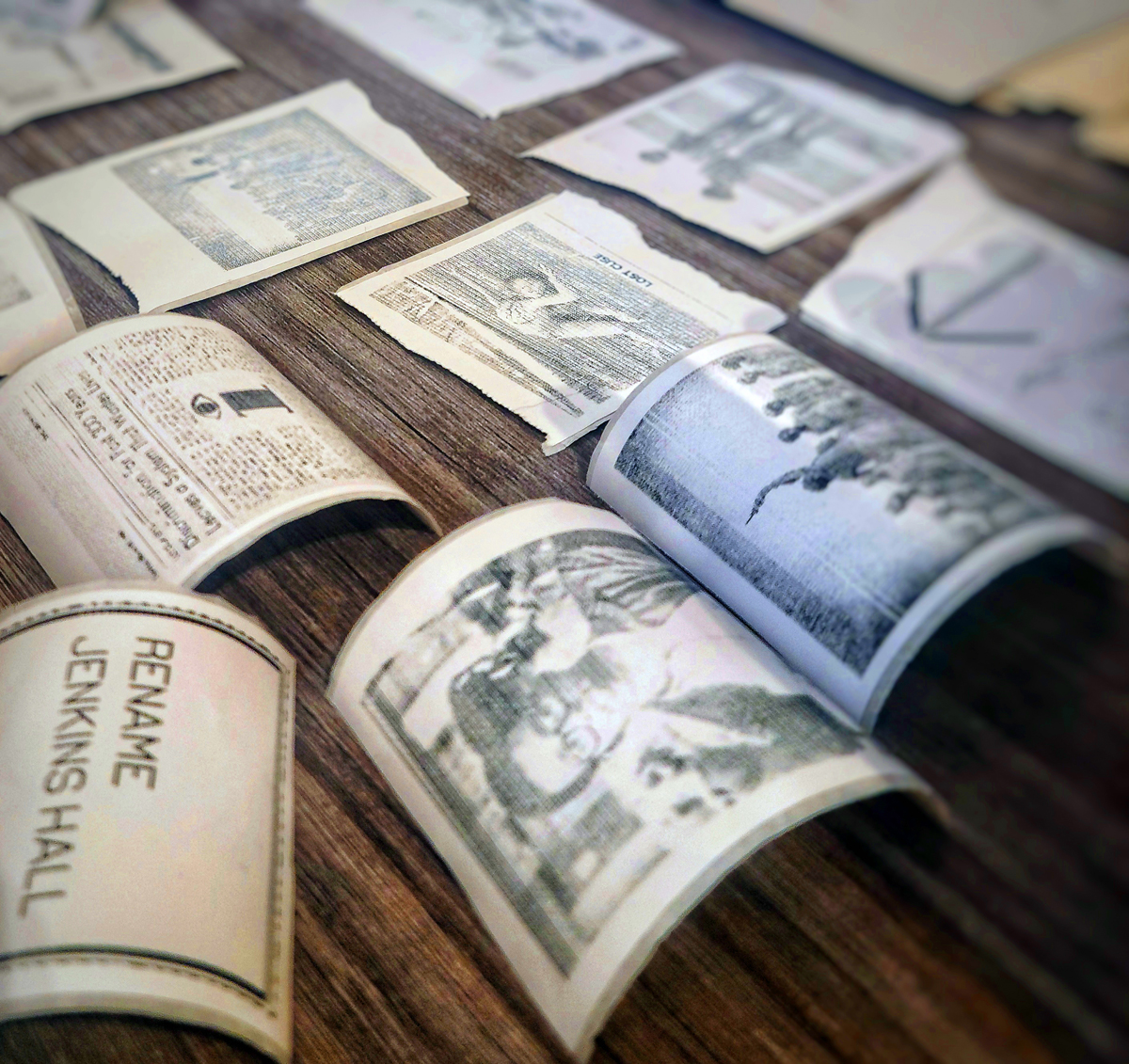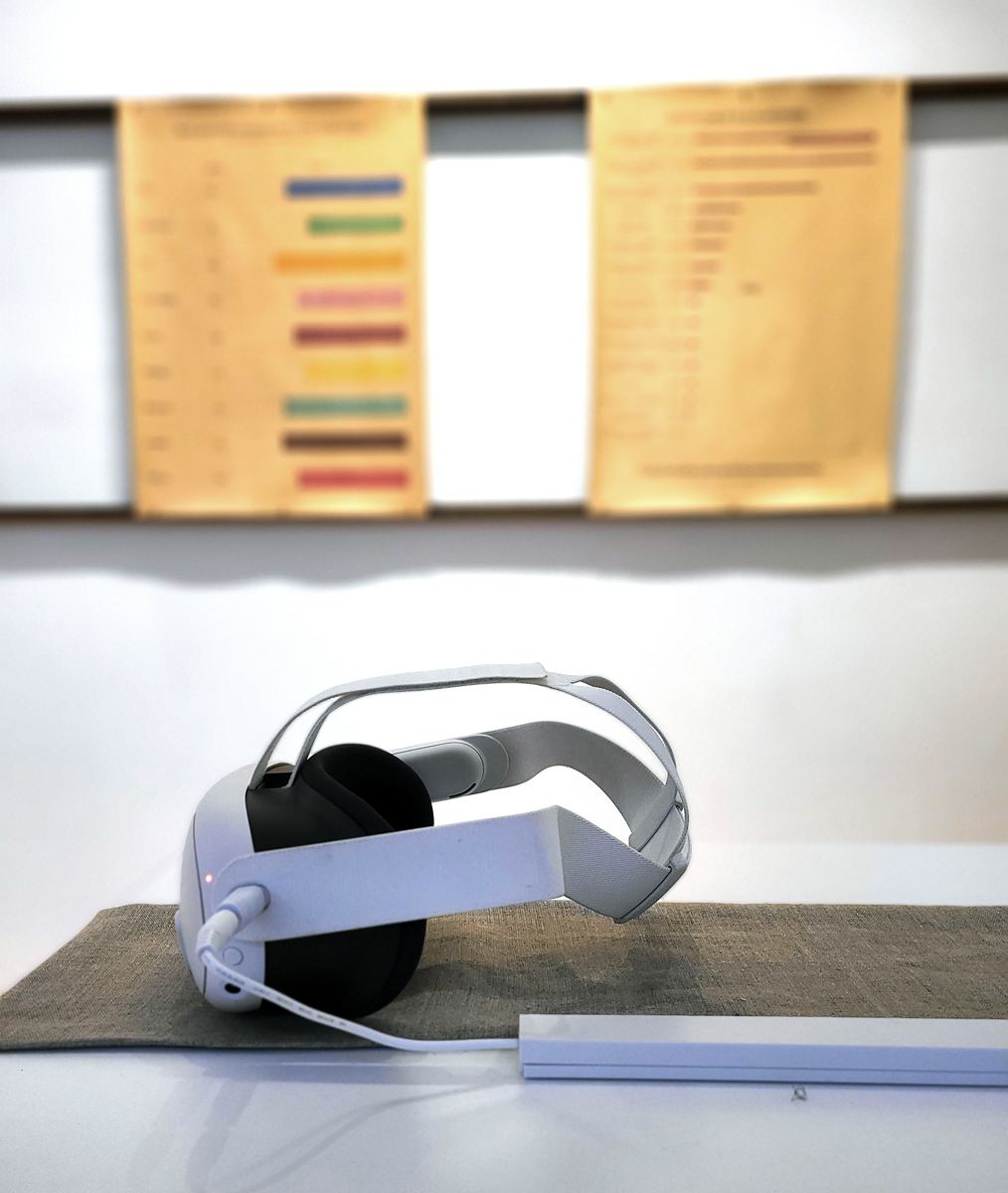Unrested serves as a look back on history through a contemporary lens, blurring the line between past and future, physical and ephemeral. The combination of artwork and augmented reality immerses visitors into the space, rooting them in the current moment.
When asked about how they combine historical archives with new mediums, Gangwisch shared, “I have a history as a filmmaker, so that’s how I approach time in general, or any of my art making. It’s all coming from a place of putting image to story and with the new media tech, also wanting to learn how to make new things in new ways. And I’m very excited by new technologies so I try to employ the documentary practices that I was trained in in my first career.”
“The field of new media art or digital art is always getting more broad and amorphous and less concrete,” added Kojzar. “When it comes to new media, the way that I approach it is as a tool set. With archives, I guess there’s a story that happens there, much in the same way JLS [Gangwisch] is talking about with documentary filmmaking. There’s a story that’s being brought to light. When creating new artwork, I’m thinking of creating things in iteration or as project-based series. So what can expand on one iteration to be something else? Or how can it be reformulated for another space or time?”
Time and space play a key role in Unrested, as the exhibition is inherently tied to its locality. The artworks represent points in time with their titles being a specific year that most closely relates to whatever is happening in the piece. For example, “1954, 1969, 1971” is an interactive triptych consisting of three hanging metalwork frames and an augmented reality component. The artwork references Loyola’s stained glass windows while exploring what kinds of heroes its students would elevate in the modern day.
When viewed through the tablet, visitors can see a sunbeam shining through the frames, creating an array of colors through augmented reality that simulates the visuals of stained glass.
Each frame depicts a carefully selected yearbook photo and is named after the year the book came out. The leftmost frame references a picture of the Loyola’s Peace Club, which was formed to protest the Vietnam War, holding peace signs and excited about the possibility of never having a war again. The middle image is a depiction of camaraderie between two students on the university’s swim team. The rightmost frame depicts the first image Bendell found in the yearbooks that featured a Black student. The photo is of an interracial couple, gazing at each other.
“It was presented in a way that I thought was a little condescending,” she said. “Sort of like, Ooh, things are changing. But to me, the real story is the way these two are looking at each other, you know? There’s an obvious bond that they share there, and that’s something that’s aspirational to me.”
